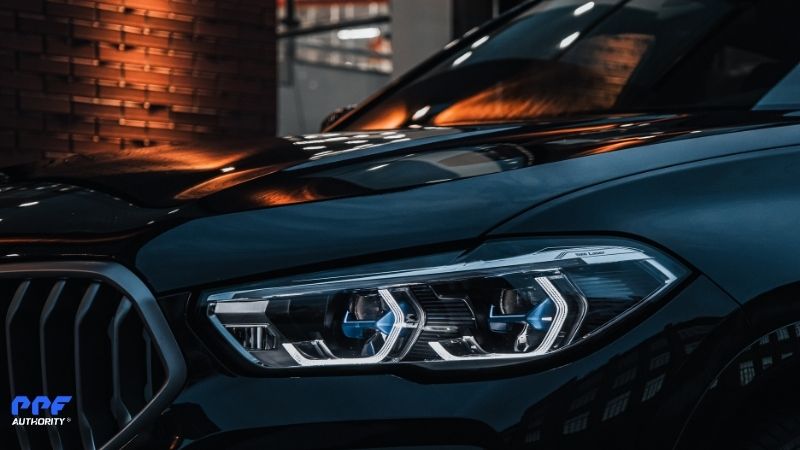Introduction
Protecting your car’s paint is essential for maintaining its appearance, longevity, and resale value. When it comes to paint protection, two popular options are ceramic coatings and regular waxing. While both methods enhance shine and offer some protection, they differ significantly in terms of cost, durability, and performance.
In this article, we’ll compare the costs and benefits of ceramic coatings and regular waxing to help you determine which option is the better investment for your vehicle.
What Is Ceramic Coating?
Ceramic coating is a liquid polymer, primarily made of silicon dioxide (SiO₂), that chemically bonds with your car’s paint to create a durable, semi-permanent layer of protection. It:
- Lasts 3–10 years, depending on the product.
- Provides superior protection against UV rays, chemicals, dirt, and minor scratches.
- Enhances paint gloss and hydrophobic properties, making maintenance easier.
Cost of Ceramic Coating
- DIY Ceramic Coating: $50–$300 for consumer-grade kits.
- Professional Ceramic Coating: $500–$2,500 depending on the product, car size, and paint preparation.
What Is Regular Waxing?
Waxing involves applying a protective layer, usually made of natural or synthetic wax, to your car’s paint. Wax offers:
- Temporary protection lasting 1–3 months.
- A glossy finish and minor resistance to UV rays and water.
Cost of Regular Waxing
- DIY Waxing: $10–$50 for a can of wax or liquid wax.
- Professional Waxing: $50–$150 per session.
Durability: Ceramic Coating vs. Wax
Ceramic Coating
- Longevity: Lasts 3–10 years with proper maintenance.
- Performance Over Time: Maintains its hydrophobic properties and gloss for years without needing frequent reapplication.
Wax
- Longevity: Requires reapplication every 1–3 months, depending on environmental conditions and driving habits.
- Performance Over Time: Fades quickly, especially in harsh weather or with frequent washing.
Winner: Ceramic coating offers significantly longer durability, reducing the need for constant reapplication.
Protection: Ceramic Coating vs. Wax
Ceramic Coating
- UV Protection: Blocks UV rays, preventing paint fading and oxidation.
- Chemical Resistance: Protects against bird droppings, tree sap, road salt, and bug splatter.
- Scratch Resistance: Adds a hard layer that minimizes light scratches and swirl marks.
Wax
- UV Protection: Provides limited protection against sun damage.
- Chemical Resistance: Can repel water and minor contaminants but does little to shield against acidic substances like bird droppings.
- Scratch Resistance: Offers no resistance to scratches or swirl marks.
Winner: Ceramic coating provides superior protection against environmental and physical damage.
Cost Comparison Over Time
Ceramic Coating Costs
Assuming a 5-year ceramic coating professionally applied costs $1,500:
- Initial Application: $1,500.
- Maintenance: Washing costs only (optional ceramic booster sprays cost $20–$40 every 6 months).
- Total Over 5 Years: $1,500–$1,600.
Waxing Costs
Assuming you wax your car every 3 months, either professionally or as a DIY project:
- DIY Waxing: $30 per application × 20 applications over 5 years = $600.
- Professional Waxing: $100 per application × 20 applications over 5 years = $2,000.
Cost Over Time
- Ceramic coating offers long-term savings compared to professional waxing.
- DIY waxing is initially cheaper but requires significantly more effort and frequent reapplication.
Convenience and Maintenance
Ceramic Coating
- Requires minimal maintenance. Regular washing and occasional ceramic boosters keep it performing optimally.
- Saves time and effort by reducing the need for frequent reapplication.
Wax
- Requires frequent reapplication every 1–3 months.
- DIY waxing is time-consuming, while professional waxing incurs repeated costs.
Winner: Ceramic coating offers greater convenience and ease of maintenance.
Aesthetic Enhancement
Ceramic Coating
- Provides a deep, mirror-like gloss that enhances color depth and clarity.
- The finish remains vibrant for years with proper care.
Wax
- Creates a shiny, wet-look finish but fades quickly.
- Requires frequent reapplication to maintain the gloss.
Winner: Ceramic coating delivers a more durable and striking aesthetic improvement.
Environmental Impact
Ceramic Coating
Long-lasting, reducing the need for frequent reapplications and associated waste.
Wax
- Frequent reapplications result in higher product consumption and packaging waste.
Winner: Ceramic coating is more environmentally friendly due to its longevity.
Who Should Choose Ceramic Coating?
Ceramic coating is ideal for car owners who:
- Want long-term protection and a low-maintenance solution.
- Are willing to invest upfront for years of performance.
- Prioritize protection against UV rays, chemicals, and scratches.
- Prefer a glossy, head-turning finish that lasts.
Who Should Choose Waxing?
Waxing is a good option for car owners who:
- Prefer a low upfront cost and are okay with frequent reapplications.
- Enjoy the hands-on process of detailing their car.
- Are looking for temporary protection for specific events or seasonal use.
Final Cost-Benefit Analysis
| Category | Ceramic Coating | Waxing |
| Durability | Lasts 3–10 years | Lasts 1–3 months |
| Protection | Superior (UV, chemicals, scratches) | Limited protection |
| Aesthetic Appeal | Long-lasting gloss enhancement | Temporary shine |
| Convenience | Minimal maintenance | Requires frequent reapplication |
| Cost Over 5 Years | $1,500–$1,600 (professional) | $600 (DIY) or $2,000 (professional) |
Conclusion
While regular waxing offers a lower upfront cost, its frequent reapplication and limited protection make it less cost-effective in the long run. Ceramic coating, though more expensive initially, provides unmatched durability, superior protection, and a low-maintenance solution that saves time and money over the years.
If you’re looking for long-term value, convenience, and premium protection for your car’s paint, ceramic coating is the better investment. For those on a tight budget or seeking short-term results, waxing remains a viable option but requires ongoing commitment.

